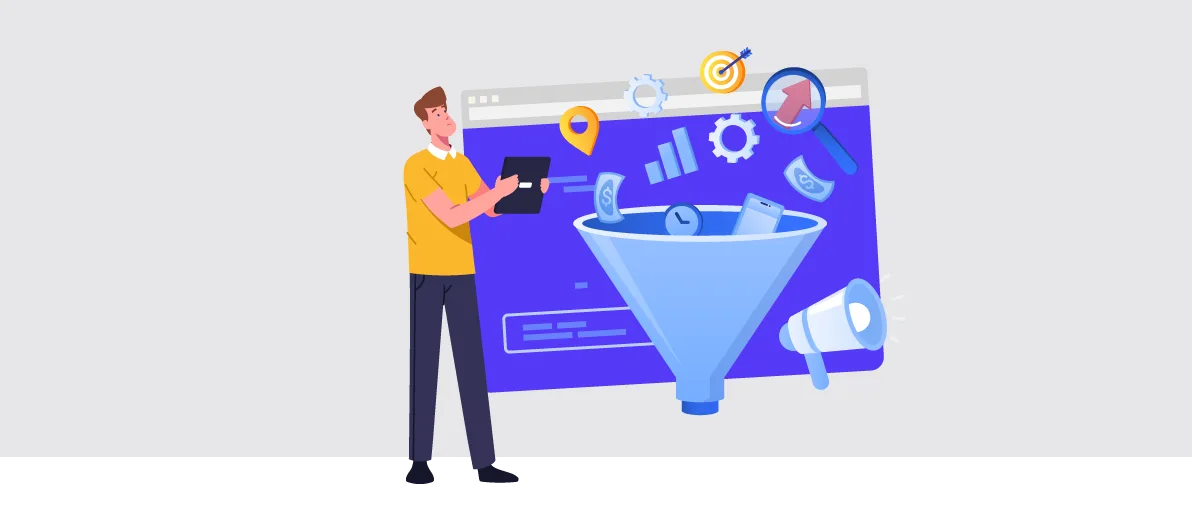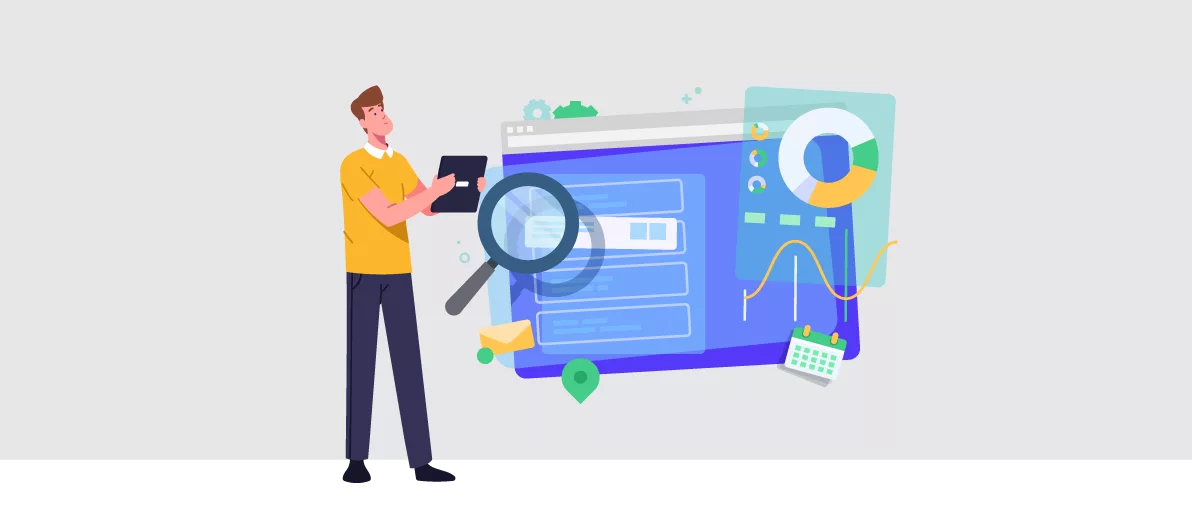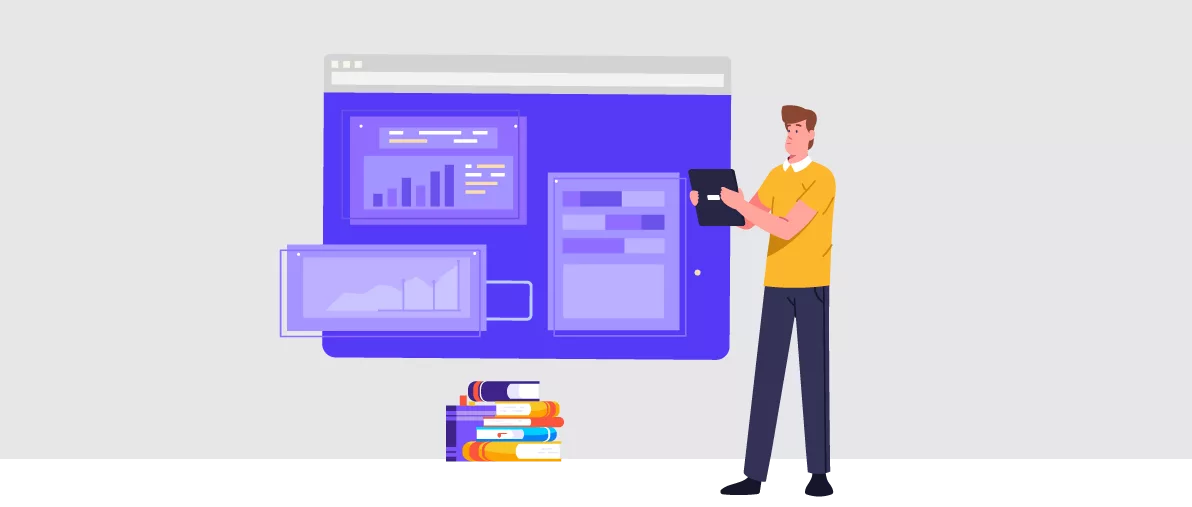Why Your Website Isn’t Generating Leads (And How to Fix It)


Your website is your online storefront. It’s like a 24/7 digital salesperson tirelessly working to attract and captivate potential customers. However, what happens when this digital salesperson fails to convert interest into action? What happens when your website isn’t doing its job? or when visitors explore your website but leave without taking any action?
At Aarna Digital, we believe your website is a lead-generating powerhouse. It must remain functional. Our website development experts have pinpointed some common reasons why many websites fail to live up to expectations and offer a clear roadmap to turn your visitors into leads. Let’s uncover the secrets to a high-performing website and transform your online presence into an irresistible customer magnet. Here we go!
Table of Contents
1. The Anatomy of a Lead-Generating Website

A : Understanding the Buyer Journey
Before diving deeper into lead generation, it is important to understand how potential customers interact with your website. The buyer journey on your website outlines the stages a customer goes through before making a purchase/taking desired action. It encompasses:
Awareness
The customer becomes aware of a need or problem.
Consideration
The customer researches solutions and evaluates different options.
Decision
The customer chooses a specific product or service and makes a purchase.
Retention
The customer becomes a loyal customer and potentially advocates for your brand.
Your website’s UI/UX play a major role during each stage of this journey, offering hands-on information and navigating visitors towards the desired action effortlessly.
B : The Essential Elements
A good, targeted lead-generating business website should have these key elements:
Clear and Convincing Value Proposition
This is the core message that defines your unique selling proposition (USP) and answers the question: “Why should customers choose you?” It should be concise, clear, and resonate with your target audience.
User-Friendly Navigation
Visitors should be able to easily find the information they need without getting lost or frustrated. An easy website structure, intuitive menus, and clear calls to action are paramount.
Engaging Content
Your content should be useful, informative, and suitable for your target audience. It should address their pain points, answer their questions, and provide solutions to their problems.
Strong Calls to Action
Don’t assume visitors know what to do next. Guide them with clear and compelling calls to action (CTAs) that encourage them to take the desired action, such as downloading a brochure, requesting a quote, or signing up for a newsletter.
Contact Forms
Make it easy for the target audience to get in touch with you. Add your phone number, email address, and contact form on every page.
2. Common Website Mistakes That Kill Leads

A : Slow Loading Times
Loading… Loading…Loading…. Exit!
A slow-loading website is a major turn-off for website visitors. They expect instant access, and if your website takes too long to load, they’ll likely abandon it and move on to a competitor. Well, that’s like not getting a fair chance to compete.
Causes
Slow loading websites can be due to various factors, including large images, complex website code, and poor server performance.
Solutions
Optimize images, minimize code, and ensure your website is hosted on a reliable server.
B : Poor Mobile Optimization
Opening a laptop for a quick query is time-consuming when you have a mobile handy, right? Smartphones contribute a large portion of your total website visitors. If your website is live but not mobile-friendly, well, it’s a recipe for online business failure.
Causes
Poor mobile optimization can result in a website that is difficult to navigate, has tiny text, and doesn’t display properly on smaller screens.
Solutions
Ensure your website is responsive, meaning it adapts to different screen sizes. Use a mobile-first approach to design and development.
C : Lack of Clear CTAs
You’re the expert on your business and website, not your visitors. Don’t assume visitors know what to do next. Guide them with clear and compelling calls to action (CTAs) that motivate them to take the desired action.
Causes
Vague or hidden CTAs can lead to confusion and lost opportunities.
Solutions
Use clear, concise language, strategically place CTAs on your website, and experiment with different button colors and sizes.
D : Irrelevant or Boring Content
Imagine reading paragraph after paragraph, and still no clue where you’re headed. That’s what it’s like for visitors who stumble upon poorly written websites. They EXIT.
Remember time is precious and you must value your visitors’ time on your website. Your content should be valuable and relevant to your target audience. It should address their pain points, answer their questions, and provide solutions to their problems quickly.
Causes
Generic or outdated content can fail to resonate with visitors and drive them away.
Solutions
Conduct thorough keyword research to understand what your target audience is searching for. Create content that is informative, engaging, and tailored to their needs.
E : Outdated Design
Picture this: You land on a website that looks old. The colors don’t go together, it’s hard to find your way around, and you can’t find what you want. You’ll probably just leave. A website that looks dated and unprofessional can damage your credibility and turn off potential customers.
Causes
Outdated design trends, poor color choices, and cluttered layouts can create a negative impression.
Solutions
Keep your website design fresh and modern. Use high-quality images, clean typography, and a user-friendly layout.
F : Confusing Navigation
A complex and confusing website structure can frustrate visitors and lead them to abandon your site.
Causes
Lack of clear menus, inconsistent navigation, and too many layers of pages can make it difficult for visitors to find what they’re looking for.
Solutions
Use a logical site structure, create intuitive menus, and provide clear breadcrumbs to help visitors navigate your website.
3. The Power of SEO

A : What is SEO?
Search engine optimization (SEO) is the process of improving your website’s visibility in search engine results pages (SERPs). When people search for products or services related to your business, you want your website to appear at the top of the results.
B : Why SEO Matters for Lead Generation
A higher ranking in search results means more organic traffic and more potential leads. SEO helps you attract qualified visitors who are actively searching for what you offer.
C : Key SEO Strategies
Keyword Research
Identify the terms your target audience is searching for. Use keyword research tools to find relevant keywords with high search volume and low competition.
On-Page Optimization
Optimize your website content and structure for search engines. This includes using relevant keywords in your page titles, headings, and content, as well as optimizing images and meta descriptions.
Off-Page Optimization
Build backlinks and promote your website on other platforms. This involves getting other websites to link to yours, which signals to search engines that your website is trustworthy and valuable.
4. Content Marketing for Lead Generation

A : The Power of Content Marketing
Content marketing involves creating and distributing valuable, relevant, and consistent content to attract and retain a clearly defined audience. By providing valuable information and solutions, you can build trust and authority, ultimately driving leads and conversions.
B : Types of Content for Lead Generation
Blog Posts
Regularly publish blog posts that address your target audience’s questions and concerns.
Articles
Create in-depth articles that provide comprehensive information on specific topics.
Ebooks
Offer valuable ebooks that provide a deeper dive into a particular subject.
Infographics
Use visuals to present complex information in an engaging and easy-to-understand way.
Videos
Create explainer videos, tutorials, or behind-the-scenes content to engage your audience.
Webinars
Host live or recorded webinars to educate your audience and establish yourself as an expert.
C : Creating Engaging Content
Know Your Audience
Understand your target audience’s needs, interests, and pain points.
Provide Value
Create content that is informative, helpful, and solves problems.
Use Storytelling
Engage your audience with compelling stories that connect with their emotions.
Optimize for Search Engines
Use relevant keywords and follow SEO best practices to improve your content’s visibility.
5. Website Analytics and Tracking
A : Understanding Website Analytics
Website analytics tools provide valuable insights into your website’s performance. They track key metrics that reveal how visitors interact with your site and help you identify areas for improvement.
Key Metrics to Track
Traffic Sources
Where are your visitors coming from? (e.g., organic search, social media, paid advertising)
Bounce Rate
The percentage of visitors who leave your website after viewing only one page.
Conversion Rate
The percentage of visitors who complete a desired action, such as filling out a form or making a purchase.
Time on Site
The average amount of time visitors spend on your website.
B : Using Analytics to Improve Your Website
Identify Your Most Popular Content
See which pages are getting the most traffic and engagement.
Analyze Your Bounce Rate
Identify pages with high bounce rates and investigate why visitors are leaving.
Track Your Conversion Rate
Monitor your conversion rate over time and make adjustments to improve it.
6. Case Studies and Real-World Examples

A : Success Stories
1) A local restaurant struggled to attract new customers despite offering delicious snacks. Their website was outdated and difficult to navigate. After a complete website overhaul focused on SEO and user experience, they saw a dramatic increase in online visibility. The new site featured mouth-watering images, clear calls to action, and optimized content for local search. Within six months, the restaurant experienced a 300% surge in online orders and in-store traffic, proving that a well-designed website can be one of the best ingredients for business growth.
2) A small online store struggled to stand out in a crowded market. To differentiate themselves, they launched a blog focusing on clothing trends, care tips, and styling advice. By consistently producing high-quality content, they positioned themselves as experts in the industry. Their blog attracted a loyal audience of fashion clothing enthusiasts who were eager to learn more. As a result, the store’s brand awareness increased significantly, and traffic to its website surged. Moreover, the blog helped build trust with potential customers, leading to higher conversion rates and repeat purchases.
Lessons Learned
- The importance of a clear value proposition.
- The power of user-friendly navigation.
- The impact of engaging content.
- The effectiveness of strong calls to action.
- The benefits of SEO and content marketing.
The Bottom Line
Your website is a powerful tool for enticing customers and generating leads. By understanding the key elements of a high-performing website, addressing common mistakes, and implementing effective strategies, you can transform your online presence into a lead-generating machine. We’ve dropped some knowledge on you about building that superstar website. Now it’s your turn to put what you’ve learned into practice and start seeing results!
Ready to take your website to the next level?
Let Aarna Digital, the top web development company in Boston, help you transform your website into a lead-generating powerhouse. Our web developers and digital marketers can team up to diagnose your website’s health, suggest effective digital solutions, and help you attract and convert more customers. Ready to see results? Contact us today to discuss your lead generation needs and learn how we can help you achieve your goals.

Richard Chavez
Richard is a content marketing maestro with 7+ years of experience under his belt. He is adept at creating captivating content that resonates with target audiences, whether it's through compelling copywriting, insightful blog posts, or engaging social media campaigns. Beyond writing, Richard is Aarna Digital’s comic icon, always keeping spirits high.